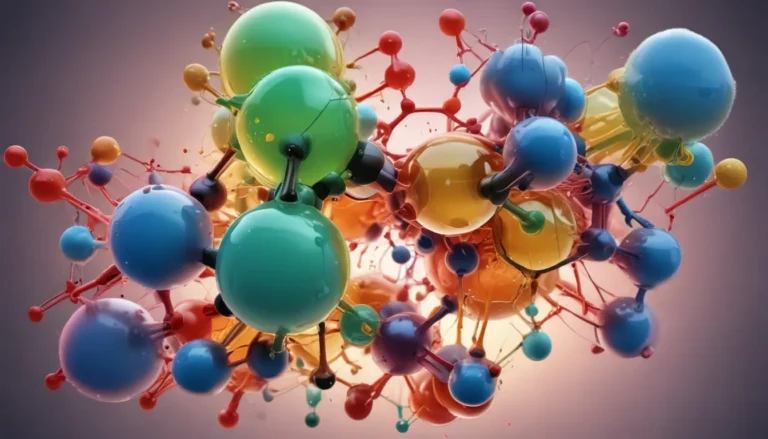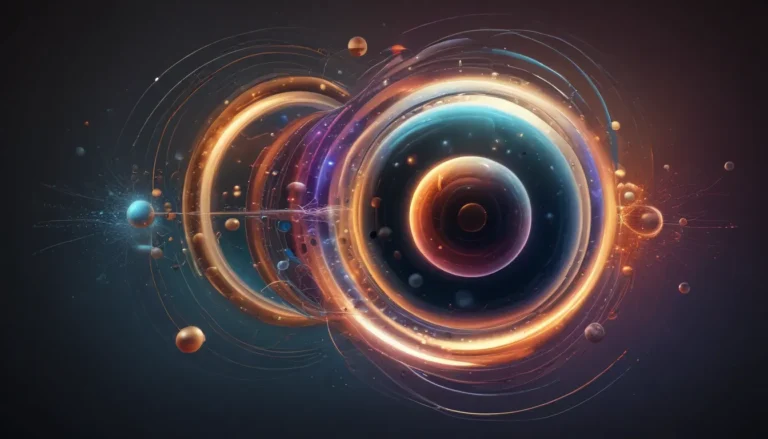A Note About Images: The images used in our articles are for illustration purposes only and may not exactly match the content. They are meant to engage readers, but the text should be relied upon for accurate information.
Are you curious about the fascinating world of UV-Visible spectroscopy? This powerful analytical technique has transformed the field of chemistry, allowing scientists to gain valuable insights into the electronic structure and bonding of molecules. In this article, we will delve into the realm of UV-Visible spectroscopy and uncover ten astonishing facts that will enhance your understanding of this indispensable tool. From its historical origins to its diverse applications across industries, UV-Visible spectroscopy continues to shape scientific research and analysis. Join us on this journey as we explore the wonders of UV-Visible spectroscopy and unlock a world of intriguing facts!
Key Takeaways:
- UV-Visible Spectroscopy enables non-destructive analysis of light absorption, aiding in pharmaceuticals, environmental studies, and quality control in industries.
- By utilizing UV-Visible Spectroscopy, scientists can determine substance concentration, study chemical structures, and identify impurities in pharmaceuticals to ensure product safety.
Unveiling the World of UV-Visible Spectroscopy
UV-Visible Spectroscopy is a versatile analytical technique that involves the measurement of light absorption and transmission in the ultraviolet (UV) and visible (Vis) regions of the electromagnetic spectrum. This method is widely utilized in analytical chemistry to examine the properties of various substances.
Identifying and Quantifying Sample Components
One of the remarkable capabilities of UV-Visible Spectroscopy is its ability to identify and quantify sample components by analyzing the absorption spectrum. This process provides valuable insights into the presence and concentration of different chemical compounds within a sample.
Applications Across Diverse Fields
UV-Visible Spectroscopy plays a pivotal role in various industries, including pharmaceuticals, environmental analysis, and forensic science. By leveraging this technique, scientists can gain a deeper understanding of the composition and properties of substances, driving innovation and discovery.
Non-Destructive Analysis and Minimal Sample Preparation
A notable advantage of UV-Visible Spectroscopy is its non-destructive nature, allowing multiple measurements to be conducted on the same sample without altering its integrity. Moreover, minimal sample preparation requirements streamline the analytical process, making it efficient and convenient for researchers.
The Beer-Lambert Law: A Fundamental Principle
Central to UV-Visible Spectroscopy is the Beer-Lambert Law, which establishes a direct relationship between substance absorbance, concentration, and light path length. This foundational principle serves as the basis for quantitative analysis using UV-Visible Spectroscopy.
Revealing Chemical Structures
Through the analysis of absorption peaks and patterns in UV-Visible spectra, scientists can unravel the chemical structure and functional groups present in compounds. This capability enables researchers to gain valuable insights into the molecular composition of substances.
Ensuring Quality Control in Industries
Industries such as pharmaceuticals, food and beverage, and cosmetics rely on UV-Visible Spectroscopy for quality control and assurance purposes. By maintaining consistent product standards, companies can uphold safety and efficacy across their product lines.
Studying Reaction Kinetics
UV-Visible Spectroscopy proves invaluable in studying reaction kinetics by monitoring changes in compound absorbance over time. This information offers crucial insights into reaction rates and mechanisms, enhancing researchers’ understanding of chemical processes.
Detecting Impurities in Pharmaceuticals
Pharmaceutical manufacturers leverage UV-Visible Spectroscopy to detect and quantify impurities in drug formulations, ensuring compliance with regulatory standards and safeguarding patient safety. This capability underscores the importance of quality control in the pharmaceutical industry.
Enhanced Analysis Through Combined Techniques
By integrating UV-Visible Spectroscopy with complementary analytical techniques like chromatography and mass spectrometry, researchers can enhance their analysis of complex samples. This integrated approach provides a more comprehensive understanding of sample composition and properties.
Conclusion: Unlocking the Potential of UV-Visible Spectroscopy
UV-Visible Spectroscopy continues to be a driving force in scientific research and analysis, offering valuable insights into the molecular world. By exploring the applications, principles, and capabilities of UV-Visible Spectroscopy, we gain a deeper appreciation for its impact on various industries and scientific endeavors.
FAQs: Exploring Common Questions
- Q: What is UV-Visible spectroscopy?
-
A: UV-Visible spectroscopy is a technique used to measure light absorption and emission by substances, revealing their electronic structure and properties.
-
Q: What are the applications of UV-Visible spectroscopy?
-
A: UV-Visible spectroscopy finds applications in pharmaceutical analysis, environmental monitoring, forensic science, and materials research.
-
Q: How does UV-Visible spectroscopy work?
-
A: UV-Visible spectroscopy involves passing light through a sample, measuring its intensity before and after interaction to determine substance presence and electronic transitions.
-
Q: What are the limitations of UV-Visible spectroscopy?
-
A: UV-Visible spectroscopy is limited by sample concentration requirements, impurity interference, and its inability to provide detailed structural information.
-
Q: Can UV-Visible spectroscopy be used for quantitative analysis?
- A: Yes, UV-Visible spectroscopy enables quantitative analysis by correlating light absorption/emission with substance concentration.
UV-Visible spectroscopy offers a captivating glimpse into the world of analytical chemistry. Dive deeper into the realm of spectroscopy with fascinating facts about the spectrum’s wavelengths. Delve into the intriguing world of atomic absorption spectroscopy (AAS) with 11 captivating facts for absorption spectroscopy enthusiasts. Expand your knowledge of analytical chemistry with 13 engrossing facts, shedding light on this essential branch of science.
Our dedication to providing reliable and engaging content ensures that each fact on our site is contributed by knowledgeable users and meticulously reviewed by our editors. Explore with confidence and trust in the authenticity and quality of the information you discover with us. Join us on this enlightening journey of exploration and learning as we uncover the wonders of UV-Visible spectroscopy and its impact on scientific discovery.






